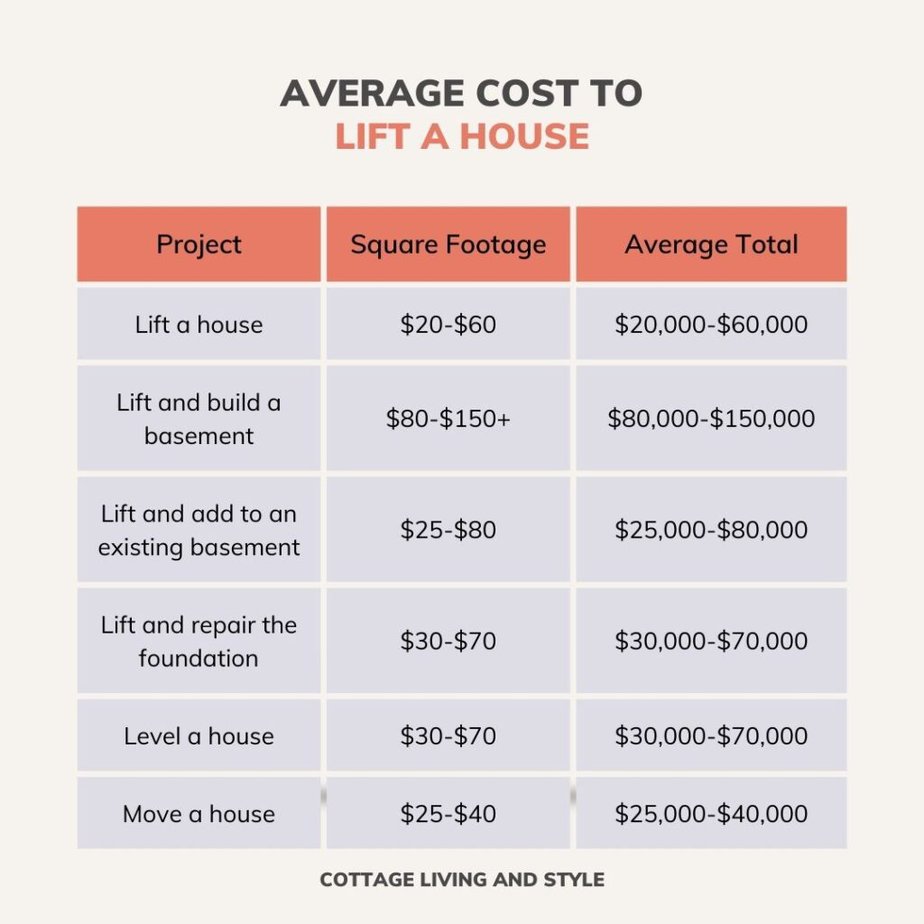
House lifting is a significant undertaking that involves raising a home to a higher elevation, typically to mitigate flood risk or accommodate foundation repairs. The cost of house lifting can vary widely depending on various factors, including the size and weight of the home, the elevation required, and the complexity of the project.
Understanding the Factors
Several factors influence the cost of house lifting. The size and weight of the home are significant determinants, as larger and heavier homes require more labor and equipment to lift safely. Additionally, the elevation required plays a crucial role, with higher elevations generally resulting in higher costs. The condition of the home’s foundation and structure can also impact the cost, as repairs or reinforcements may be necessary before lifting can occur.
Estimating the Cost
Estimating the cost of house lifting can be challenging due to the many variables involved. However, homeowners can typically expect to pay anywhere from tens of thousands to hundreds of thousands of dollars for a house lifting project. To obtain an accurate cost estimate, it’s essential to consult with experienced house lifting contractors who can assess the specific needs of your property and provide a detailed quote based on factors such as labor, materials, and equipment.
Assessing Additional Expenses
In addition to the cost of lifting the house itself, homeowners should budget for various additional expenses associated with the project. These may include obtaining permits and approvals from local authorities, hiring engineers or architects to design the lifting plan, and arranging for temporary relocation or accommodation during the lifting process. It’s essential to factor in these additional expenses when budgeting for a house lifting project to avoid unexpected costs down the line.
Comparing Quotes and Contractors
When seeking quotes for a house lifting project, it’s essential to obtain estimates from multiple contractors and compare them carefully. While cost is undoubtedly a significant factor, it’s equally important to consider the contractor’s experience, reputation, and track record of success. Choose a contractor who has extensive experience with house lifting projects and a proven ability to deliver quality results safely and efficiently.
Exploring Financing Options
Given the significant cost of house lifting, many homeowners may explore financing options to help cover the expense. Some municipalities offer grants or low-interest loans for flood mitigation projects, which may help offset the cost of lifting a home in flood-prone areas. Additionally, homeowners may consider tapping into home equity through a home equity loan or line of credit to finance the project.
Planning for the Future
House lifting is a substantial investment in the long-term stability and safety of a home. As such, homeowners should carefully consider their future plans and needs when undertaking a lifting project. Will the elevated home require additional renovations or modifications to accommodate the new elevation? Are there ongoing maintenance or insurance costs associated with the lifted home? Thinking ahead can help homeowners make informed decisions and ensure that the investment pays off in the long run.
For those considering a house lifting project, it’s essential to understand the factors influencing the cost and carefully plan and budget accordingly. To learn more about house lifting cost and explore your options, visit House Lifting Cost. With expert guidance and support, homeowners can lift their homes safely and confidently, protecting their investment for years to come.
